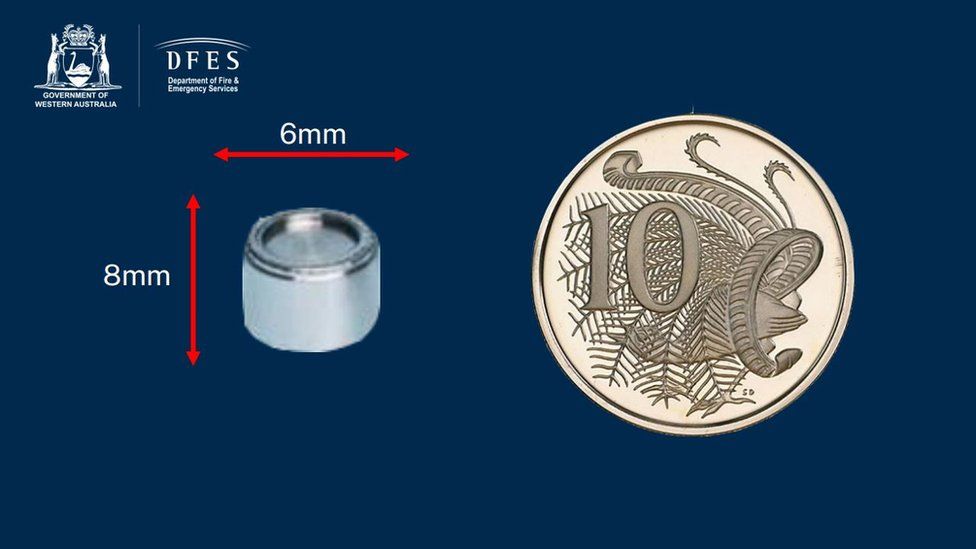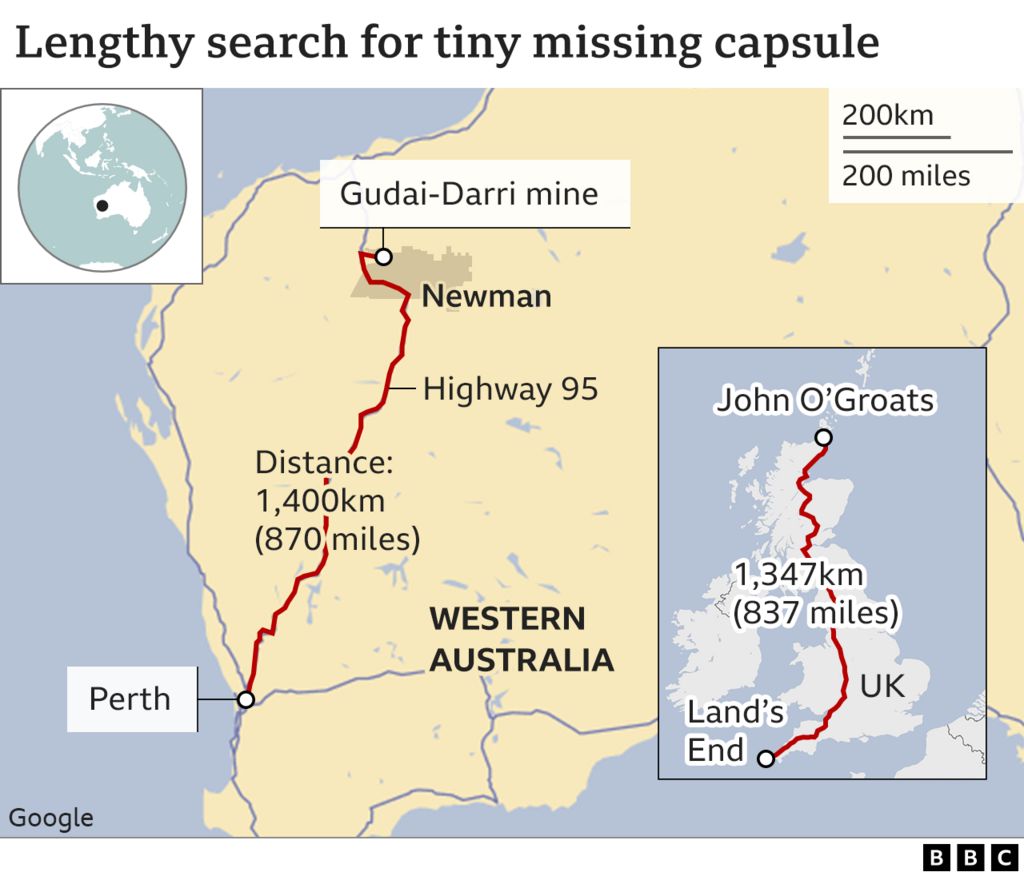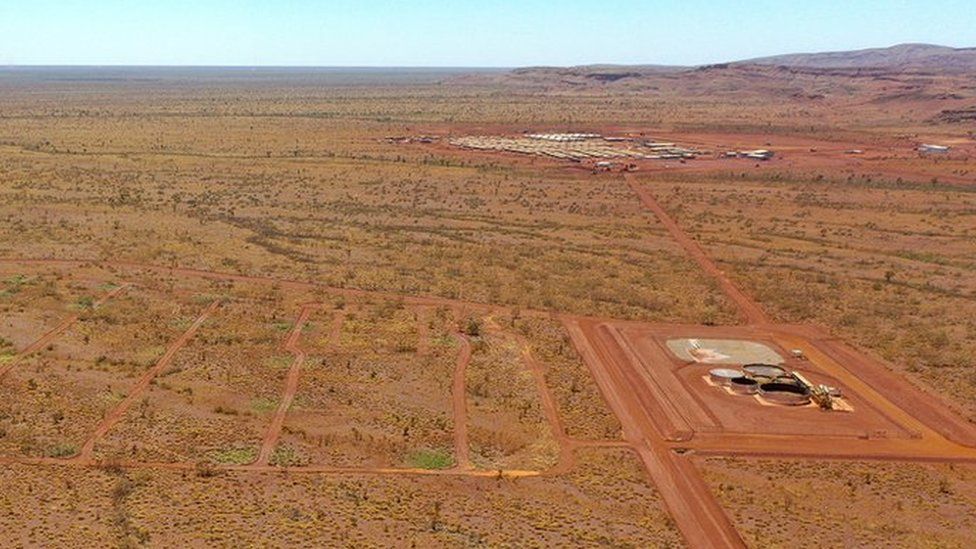Crisis administrations are chasing after the gadget along the course it was moved
Mining goliath Rio Tinto has apologized for losing a minuscule radioactive container that disappeared as it was being shipped across Western Australia.
A crisis chase after the gadget, which is about the size of a pea, is in progress along the 1,400km (870 mile) course.
The case contains a little amount of radioactive Caesium-137, which could make difficult sickness any individual who comes into contact with it.
That could incorporate skin harm, consumes or radiation disorder.
Crisis administrations are looking for the gadget utilizing radiation identifiers and other particular gear, and say the possibilities finding the little gadget are "very great".
Yet, Australia's Specialization for Fire and Crisis Administrations said the silver container - which is simply 6mm (0.24 inches) in measurement and 8mm long - was so little it could have become stopped in the tire of a vehicle passing along the street.
There is likewise worry that assuming it is found by an individual from the general population, they could incidentally keep it as a gift.
Specialists are quick to push that holding the container could bring about radiation consumes, while long haul openness could cause malignant growth.
burns, while long-term exposure could cause cancer.
The capsule may have gone missing up to two weeks ago.
Rio Tinto, which has big mining operations in Australia and has been the subject of a series of controversies in recent years, said it was sorry for the alarm that had been caused.
The firm would be launching its own investigation into what had happened, it said in a statement.
The lost device is part of a density gauge, which is common in the mining industry. It was being used at Rio Tinto's Gudai-Darri mine in the remote Kimberley region.
The gauge was being transported by a subcontracted company, who picked it up from the mine site on 12 January to move it to a storage facility in the north-east suburbs of Perth.
When it was unpacked for inspection on 25 January the gauge was found broken apart and the radioactive capsule was gone. One of four mounting bolts and screws were also missing.
The authorities said vibrations during transit may have caused the bolts to become loose, allowing the capsule to fall through gaps in the casing and truck.
The search route is huge. It is roughly equivalent to the distance by road from John O'Groats in Scotland to Land's End in Cornwall, or from Washington DC to Orlando, Florida.
Specialist radiation detection equipment is being fitted to patrol vehicles that will cover the length of it. Over five days, they will travel in both directions along the Great Northern Highway at speeds of around 50km/h (30mph).
Simon Trott, chief executive of Rio Tinto's iron ore division, said: "As part of this investigation we are working closely with the contractor to better understand what went wrong in this instance.
"Rio Tinto engaged a third-party contractor, with appropriate expertise and certification, to safely package the device in preparation for transport off-site ahead of receipt at their facility in Perth.
"Prior to the device leaving the site, a Geiger counter [a device to detect radioactivity] was used to confirm the presence of the capsule inside the package," Mr Trott added.
State officials have issued a radiation alert across a vast swathe of Western Australia and warned of the potential danger of coming into contact with the object.
Exposure to trace quantities of the metal is like "receiving 10 X-rays in an hour, just to put it in context, and... the amount of natural radiation we would receive in a year, just by walking around," said Western Australia's chief health officer Andrew Robertson.
The state's desert is remote and one of the least populated places in the country. Only one in five of Western Australia's population lives outside of Perth, the state's capital.
But if anyone does stumble across the capsule, they should avoid handling it, Mr Robertson said.
"If you have contact or have it close to you, you could either end up with skin damage, including skin burns... and if you have it long enough near you, it could cause what is called acute radiation sickness, and that will take a period of time," he added.
This incident comes as Rio Tinto tries to repair its reputation in Australia after it was hit by a backlash for destroying sacred Aboriginal rock shelters in Western Australia.
In 2020, Rio Tinto blasted the 46,000-year-old rock shelters at Juukan Gorge to expand an iron ore mine, sparking a major outcry that led to several of the company's top bosses standing down.
And last year, a parliamentary inquiry found sexual harassment was rife at Australia's mining firms, after an internal review at Rio Tinto found more than 20 women had reported actual or attempted rape or sexual assault over five years.









0 Comments